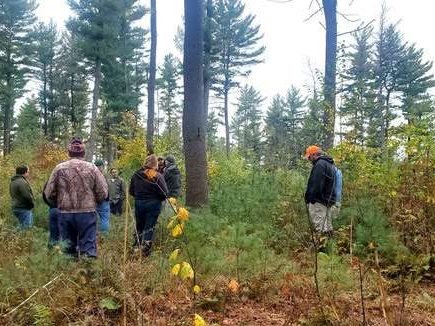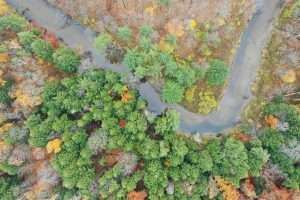Cortland County Tree Plantations: Some History & An Update


 During the Great Depression in the 1930s, the Democratic Franklin D. Roosevelt administration, under the 1929 State Reforestation Act and the 1931 Hewitt Amendment, made it possible for hundreds of young men to secure jobs working on the reforestation of many unproductive and abandoned farms.
During the Great Depression in the 1930s, the Democratic Franklin D. Roosevelt administration, under the 1929 State Reforestation Act and the 1931 Hewitt Amendment, made it possible for hundreds of young men to secure jobs working on the reforestation of many unproductive and abandoned farms.
One of thosee areas is now the Taylor Valley State Forest (Seacord Hill) in Cortland County, NY.
Through the work of the Civilian Conservation Corps (CCC), thousands of tree seedlings were planted on land that once was used for agricultural purposes. The Truxton CCC Camp S-118 was originally located in the area now occupied by the Forest’s popular Cheningo Day Use Area.
Last fall, foresters and forestry technicians from the New York State Department of Environmental Conservation (DEC) toured timber management sites under their care in the state forest to discuss the success of multiple forest regeneration projects.
They visited four tree plantation sites, which mostly now serve hunters, and provided this report:
Norway spruce plantation: Thirteen years ago, this site experienced severe decline and dieback of vegetation due to insects, drought, stress, and fungus infections. DEC foresters directed removal of most of the under- and overstory vegetation to promote healthy regeneration.
For most timber management projects, DEC contracts out and oversees the work done by private logging companies associated with the highest bid for each project. Today, the new young forest of hardwood seedlings and saplings in these clear-cut areas offer essential habitat for many wildlife species in the forest.
White and red pine plantation: Ten years ago, foresters observed that the canopy of red pine in this area appeared unhealthy. The team organized a salvage of the red pine timber and selectively applied herbicide to dense and fast-growing beech trees in the understory to remove trees affected by beech bark disease and eliminate resource competition for other desirable tree species. This site now boasts a dense layer of healthy white pine seedlings scattered with hardwood seedlings and saplings.
Red pine plantation: Two years ago, forestry staff directed clearing of patches in the red pine canopy at this site to regenerate portions of the plantation. Contracted loggers removed undesirable undergrowth species of beech, striped maple, ironwood, and ferns. Loggers used a bulldozer to loosen and mix the top layers of soil and rip up roots of undesirable species to allow a greater variety of trees to germinate and grow. Today, this area of the forest features a promising diversity of new hardwood and red pine seedlings.
Hardwood forest: This area of the forest consists of a large quantity of mature black cherry trees with undesirable growth in the understory. Here, the black cherry trees have reached peak growth, which is an opportune time to regenerate seedlings before the trees start aging and decline.
Since black cherry seeds germinate and grow best with lots of light, the team contracted loggers to partially thin the canopy and remove undesirable growth in the understory to create ideal conditions. If successful, staff will remove the remaining canopy to release a new layer of black cherry and other tree seedlings.
The state forest is now also home to several major trails, including nine miles of the Finger Lakes Trail, and portions of New York State snowmobile corridor trail 5G and secondary trails 59A and 59B.
Taylor Valley State Forest may be accessed by taking NY Route 41 toward Solon and turning onto Telephone Road. Turn left onto Kiwanis Road, and another immediate left onto the Mount Roderick Public Forest Access Road to access the western portion of the forest. Continue down Telephone Road to Hawley Woods Road, and then finally turn left onto Taylor Valley Road to access the eastern portion of the forest.
Source link




